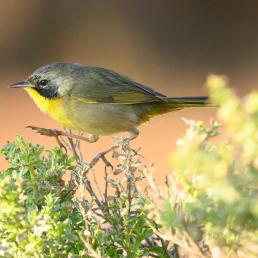

Join BirdNote tomorrow, November 30th!
Illustrator David Sibley and actor H. Jon Benjamin will face off in the bird illustration battle of the century during BirdNote's Year-end Celebration and Auction!
BirdNote science advisor and writer, Gordon Orians, writes: Imagine a place on the American landscape so rich and hospitable that it attracts and nurtures polar bears, caribou and more than 60,000 black geese, called Brant.
You’ll find such a place on the northern Arctic plain of Alaska. Its name is Teshekpuk Lake. The wetlands surrounding the lake provide a food-rich haven for arctic-breeding geese during the late weeks in summer when they cannot fly. The birds are molting, and to survive this dangerous time, they must find a place rich in food and safe from predators.
It’s the most important place for goose molting in Arctic Alaska, this Teshekpuk Lake. The 60,000 Black Brant represent about 20 percent of the world’s population, and they go to the rich sedge meadows surrounding the lake, as do many other birds.

Teshekpuk Lake is also an important denning and feeding area for polar bears. In spring, the 67,000-strong Central Arctic caribou herd gathers here to give birth to their calves. Spanning a large part of the North Slope, the Reserve includes vital habitat for fish and wildlife resources of local, national, and global significance.
Because the Arctic plain is so biologically important for many birds and mammals, many who care about wildlife believe that it should be off limits to drilling for oil and gas.


